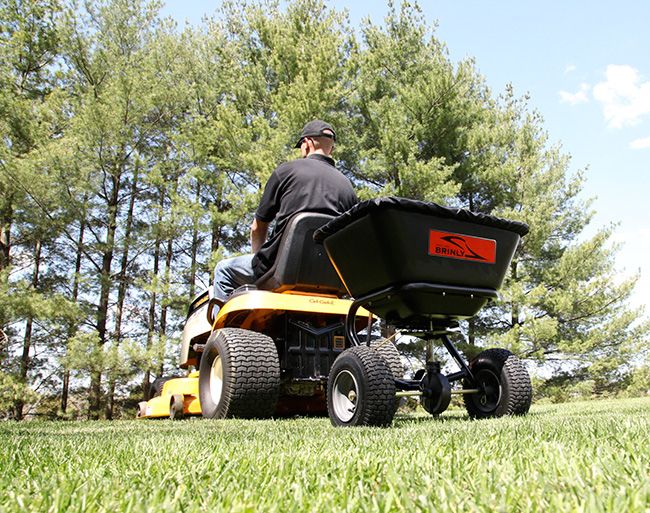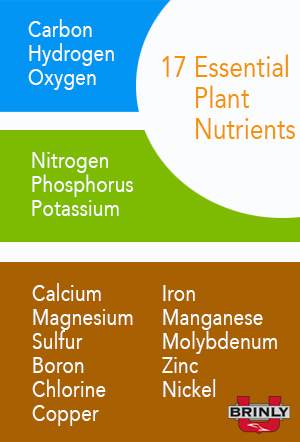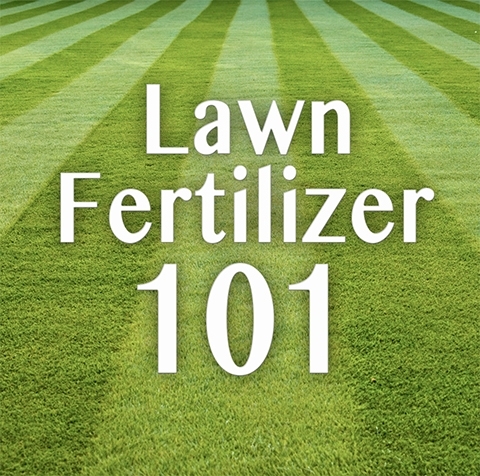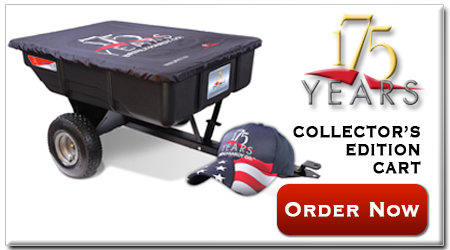
As the snow begins to melt and the daytime temperatures creep higher and higher, we start to feel that familiar anxiousness deep inside of us. Spring is just around the corner. The feeling is so real we can almost feel the sun on our skin. We can almost hear the birds begin to sing again. We can almost see the vibrant colors of life and smell the scents of spring flowers. It’s there; we can sense it, even before it happens.
In appreciation of the coming greenup of spring, we thought it would be fitting to create a clear and concise resource covering the art and science of fertilization.
Let’s begin with the fundamentals.
Primary Nutrients
Nitrogen, Phosphorus, and Potassium. N, P, and K. These are the primary nutrients that give every living plant what it needs to survive. Every bag of lawn fertilizer will be labeled with its N-P-K Ratio, listed in the format 1-1-1. The first is the number of parts Nitrogen, then Phosphorus, then Potassium. But because Nitrogen is the most highly used and critically important of the three, a typical ratio will generally be more like 10-1-1.
Nitrogen is vital to the production of chlorophyll, which gives the grass its deep green color. Nitrogen is also fundamental for growth. Application of fertilizer is generally expressed in terms of how much Nitrogen is being put down, per 1000 square feet, regardless of how much Phosphorus or Potassium is being applied. Phosphorus helps to promote root growth and is often found in higher concentrations in lawn starter fertilizers, but has serious potential for ecological damage if applied in excess. Potassium helps the lawn decrease water needs by minimizing water loss due to transpiration. It also contributes to hardiness, providing resistance to disease and extreme temperatures.
Secondary & Micronutrients
In addition to Carbon, Hydrogen, Oxygen, and the primary nutrients above, there are 11 other nutrients that all plants need to survive and thrive. Calcium, Magnesium, and Sulfur are considered secondary nutrients, while the remaining 8 are known as trace elements or micronutrients. These are needed in significantly smaller quantities than the primary nutrients but are still critical in the production of chlorophyll, disease resistance and other important plant functions.

Types of Fertilizer
This is the part that leaves many homeowners scratching their heads. There are granular fertilizers and there are liquids. There are quick release and then there are slow release. Oh, and don’t forget organic. And winterizer. Whew!
It’s enough to make your head spin. Deep breath. Let’s try to make some sense of it all.
- Rate of Absorption – liquid lawn fertilizers are the most readily absorbed by the lawn, followed by quick release granular fertilizers, which must be “watered-in” in order to allow the granules to break down and be absorbed by the root system. Next in terms of speed is organic material, which must first be broken down by microbes in the soil before it can be absorbed. Finally, by design, slow-release fertilizers must be watered periodically to continue to release nutrients over a period of time.
- Frequency of Application- the flipside of the absorption rate is how often the fertilizer must be reapplied. Liquids and quick-release granules are readily absorbed and must be reapplied multiple times each season. In contrast, one application of slow-release or organic fertilizer may be sufficient to get your lawn through the season.
- Application Method – liquid fertilizers can be applied with hose-end, push, or tow-behind sprayers. Granular fertilizers can be applied with handheld, push (either drop or broadcast), or tow-behind spreaders.
- Ground Temperature – A natural restriction for organic fertilizers. The soil temperature must be high enough (roughly 50°F) for microorganisms to be active in order to break down the material and make the nutrients available for absorption.
Winterizer
There has been considerable debate surrounding the effectiveness of late-fall “Winterizer” fertilizers, which are generally higher in Potassium. Others argue that this is merely a sales gimmick, and still others argue for an application of quick-release high-nitrogen fertilizer instead. Each of these arguments is valid…given the right context.
For cool-season grasses, an early fall application of quick-release high-nitrogen fertilizer will boost foliar growth, which is exactly what we want in early fall. However, the same application in late fall or winter would expose that tender new growth to potential damage from sub-freezing temperatures. In late fall, for cool-season grasses, high-Potassium fertilizers may help the lawn withstand the stresses of extreme winter temperatures. But because warm-season grasses go dormant during the winter, Winterizers are only recommended for cool-season grasses.
Frequency and Timing
In order to determine when and how often to fertilize, we must know the type of grass our lawn consists of. Here is a good tool to help you identify yours if you’re unsure. We want to fertilize during the lawn’s most vigorous growth periods, so for cool-season grass that means spring and fall. For warm-season grasses, spring and summer. A general rule is to time your first spring feeding with your first mowing, so that you know that your lawn is already actively growing.
How often you fertilize will depend on the type of fertilizer you’re using, whether you’re mulching or collecting your trimmings, and the general composition of your soil. Mulching your clippings allows those nutrients to decompose and return back to the lawn. Just be sure to cut often enough that you never trim more than one third of the grass blade at any one time. Adding compost or other blended topdressings annually will also help improve overall soil composition, which will also help break down thatch and retain moisture during the summer months.
Conclusion
While climate, soil condition, grass types, and many other factors play a role in determining the appropriate fertilization program for a given lawn, we’ve covered enough of the fundamentals to consider yourself a Fertilizer 101 graduate. The perfect place to start when taking on any new lawn is a soil test. You can have your local Cooperative Extension office do a test, or simply purchase a kit from your nearest home improvement center. From there you can determine the appropriate lawn fertilization regimen to begin building a thick, beautiful, weed-resistant lawn.
Author: Brad Turner



